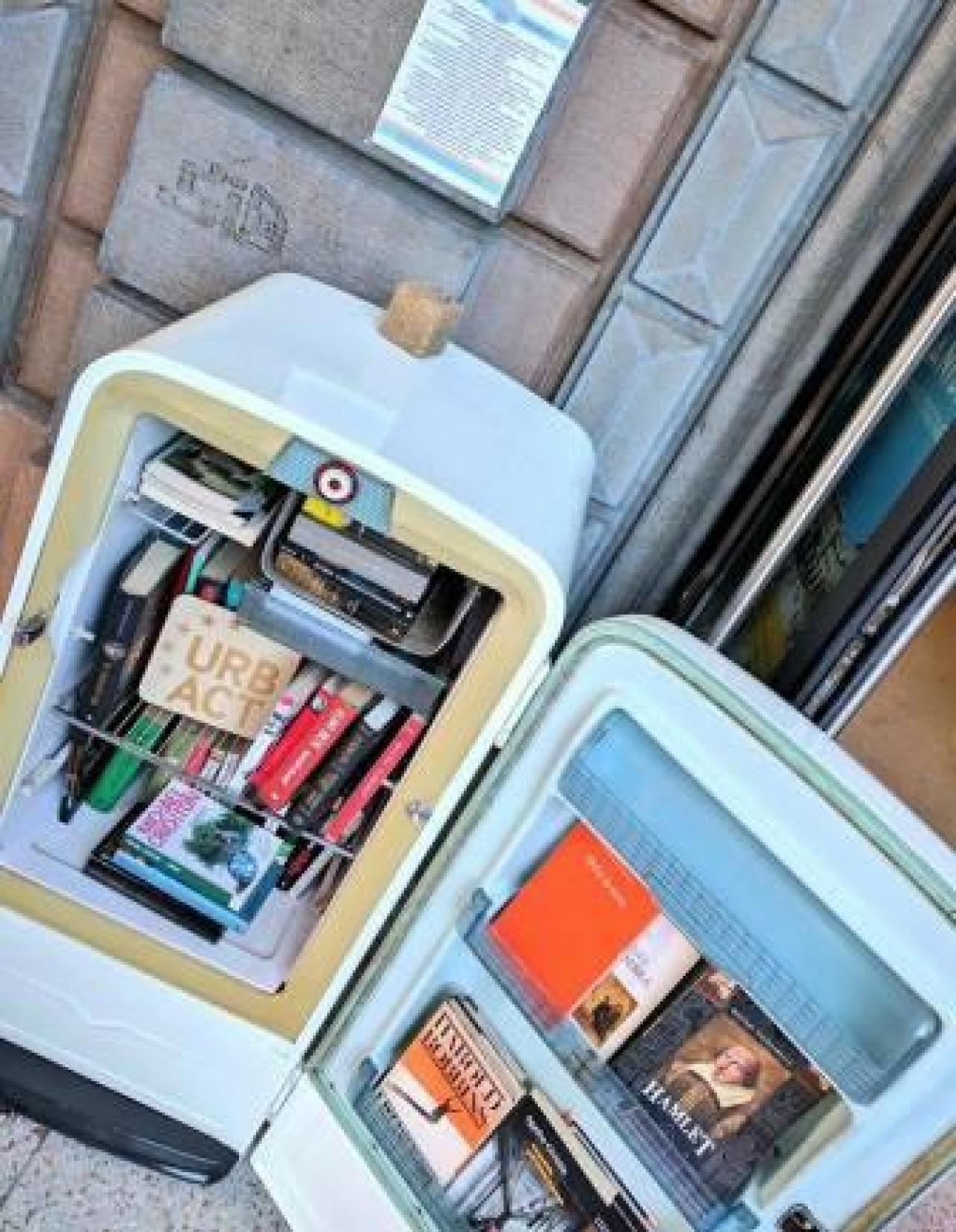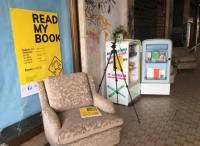
Empty commercial spaces can be understood as urban supplies for the experimentation with collective dreams, not just places for relaunching trade. Which point of view do we have to adopt to reinterpret abandoned places and to give them new life and shape? How to combine and integrate temporary uses into longer term urban regeneration processes? How to rekindle interest or provoke debate on the tools, policies, laws and practices of reactivating marginal, degraded and underutilized spaces? How can we make them accessible again and capable of answering society's housing, leisure and work needs? Some recent design experiences in Europe, many of which are funded through URBACT encourage experimentation with practices that reuse places by extending their use to a plurality of actors, fertilizing abandoned spaces with new activities and uses. Than can trigger new economic activity that combine architectural conversion with public art, creative urbanism, activism and social design. These reuse projects will be the result of continuous selection and settlement processes.
Commercial services maintain and amplify a socially aggregating function: they aren’t a “public cities” in the strict sense, but they represent places where a plurality of "public life" activities take place and, with very different forms, they continue to connote spaces potentially and variously "central” in local settlement systems. Temporary informal spaces near small commercial realities can be considered places of participation and sharing, places where you can experience forms of community and where you can take control and management of spaces, even if for a short time and with limited purpose activities.
The Urbact “Re-growCity” network is experimenting with the creation of pop up shops. These are temporary uses of vacant retail property by local entrepreneurs, artists or community groups. Deepening the dynamics of temporary reuse for the revival of trade placemaking is an important element for successful cases. Below we will analyze some examples, which are inspirational.
Antwerp (BEL) has redesigned the dynamics of an area in the city center. The integrated multi-stakeholder approach displayed in Antwerp’s «Oud Berchem» neighborhood has proven to be an effective as well as inspiring methodology to transform a depreciated shopping area into a lively axis of creativity. The success ratio for the conversion of vacant retail units stands at 70%, with 60% of the units being long-term rented, and 10% being sold to entrepreneurs.
The planned steps for this successful formula are the following:
- The approach has starts with identifying the owners of vacant retail units on one hand and creative entrepreneurs on the other hand;
- The vacant retail units were rented by a non-profit organization on behalf of the local authority. Because the focus lay on poorly maintained properties, they were lightly refurbished by means of local government funding prior to the rental period;
- During a fixed time frame of two months, it is offered at a reduced tariff to starting creative entrepreneurs to try out their business in a real-life environment;
- After the two month period, the profitability of the business and further ambitions of the starting entrepreneurs were evaluated, and customized coaching and counselling were made available by the municipality.
The success has inspired owners not involved in the project to refurbish their own retail units. A majority of the entrepreneurs involved (18 in 2016 and 10 newcomers in 2017) have reported having either started a permanent shop in the city or are continuing their activities on a freelance basis or through web shops.
Hengelo (NED) has explored the use of vacant spaces through a cooperation project with the Welbions Housing Association «Wonen boven winkels» («Housing above shops») which has helped property owners to transform upper vacant floors (above shops) and retail space into suitable housing in the city. It has also provided economic incentives through grants for people to live in the upper floors and to undertake economic activity. The City Council together with the retail associations have promoted the involvement of the traditional stores consisting of an itinerary through the city where retailers and restaurants offer special promotions and organize in-store activities to attract public initially enticed by the new business activities and the pop-up shops.
In Gent (BEL) the «Pop up» regulation of the city allows a 90-day tax exemption accompanied by frequent checks on security and ensuring accessibility. In Riga (LAT) the City Council enabled a 90% tax reduction of the building if used for a temporary use, for 1 or 2 years.
Dunleary municipality (26.000 inhabitants, IRE) offers a retail space at low cost to allow suppliers to test the market, increase their brand profile, and showcase their products. It’s available on a weekly basis. The initiative seeks to complement the existing local businesses in Dunleary and any proposed retail activity must not contravene planning or licensing regulations or conflict with Council objectives.
The shop, only one, is owned by the municipality which, with internal staff, organizes the rotation of retailers and activities. The users has to acknowledge Council support and include the Dunleary logo on all publicity and marketing materials relating to tenancy. It has also to pay a low fee per week in advance for use of the property.
In Brescia (195.000 inhabitants, ITA) we find a project that is being copied by many municipalities of the Lombardia region. The project was born from the union of the Brescia Centro Consortium, called "PalestroOpen". The brave idea was to create a working group that involved shop owners, residents of the area, the merchants and the Municipality of Brescia. The Municipality of Brescia therefore gave its availability to guarantee the necessary funds to continue the project on other streets of the city, initiating a transformation of the initiative that from PalestroOpen
- A first level sees the use of a shop as a temporary showcase (at least for a month) for art exhibitions, with lighting paid by a Consortium of still-existing traders and no rental costs;
- A second level still requires the use of a shop as a temporary showcase but this time also for commercial purposes: in this case the lighting is paid by the tenant and the rent is defined time by time with the consortium;
- A Third level, a "temporary store", with expenses to be paid by the lease holder and, again, a basic rent to be agreed;
- Fourth level: the shop in question can become a temporary showcase with a strong interest in renting either of great attraction for the street or for future rentals: in this case the lighting is charged again to the Consortium and the contract is on free loan and “free” to be defined from time to time.
A final example comes, again, from Italy. The municipality of San Donà di Piave (42.000 inhabitants, Metro area of Venice) has been the leade partner of the "City Center Doctor" network, for the revitalization of city centers. A very important role derives from the Urbact methodology and is carried out by the local ULG. San Donà has several shopping malls, once prosperous during the ‘70s and ‘80s but now disused empty spaces that are underutilized and not liked by the population. The lesson learned during the URBACT project was clear: the identity acquired by place and space is an important driver of change. And, for this reason, in order to change identity, the concept of "appropriation" must shift. The URBACT Local Group (ULG) has carried out placemaking, urban and street art actions in temporary places to encourage the use of the spaces. The reuse action has included:
- Meetings between the local administration and the owners of the empty shops to agree on a reduced rental fee for 3 years;
- A public notice, with a manifestation of interest, for those interested in occupying the available spaces;
- The recovery of common areas by the administration with street art, book exchange, food tastings, film screenings ( all of which involve citizens and spread the concept of "common social responsibility";
- The activation of urban regeneration actions in the common spaces of the gallery: these actions are guided by the ULG and built together with the new shopkeepers, to create coordinated events.
The gallery now has 12 new stores, which have become relatively stable and some are likely to be permanent. Our project evaluation shows two key elements for successfully combining pop-up and placemaking:
- Creative placemaking: the opening of pop-up shops isn’t enough to create a prosperous environment: more subjects must contribute to the construction of innovative policies, "disruptive" and non-traditional events;
- The participation of the ULG in the construction of urban regeneration policies: after testing the Urbact methodologies the municipality has decided to make the ULG a permanent entity in the institutional processes the ULG is now officially recognized, a stable reality connected to the administration policies and with an annual budget available, paid by the municipality, to reactivate other degraded areas. It’s an important laboratory for meeting and matching public and private partners, which collects the contribution of citizens and organizations sensitive to the theme of regeneration and culture. Those who want to experiment with hybrid forms of relaunch, with innovative commercial formulas, capable of combining traditional sales activities with experimental customer contact approaches, can now find such opportunities through social networks as well as formal instutional processes.
Therefore, as we have seen, the sharing of several connected elements becomes crucial for the creation and diffusion of pop-up shops:
- A sensitive municipality, willing to test, fail and try again new hybrid formulas of "reconnection" of the voids and the emptiness;
- Low cost placemaking activities just outside the places that need to be reactivated;
- The presence of a a group capable of creating social and economic bonds in the local ecosystem. The ULG tool is the pivot, cornerstone and central example, especially for small and medium-sized municipalities with few skills within the administration and limited innovative capacity.


